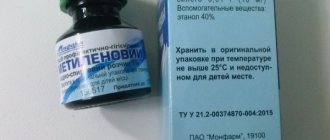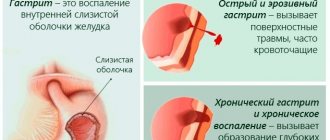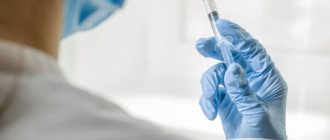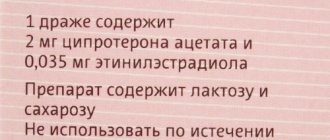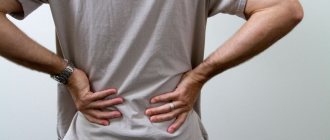01/21/2021
9 101
Author, editor and medical expert – Klimovich Elina Valerievna.
Chlorphenamine and pheniramine maleate are substances that help eliminate allergic reactions. They belong to the group of antihistamines (i.e., suppressing the action of the histamine mediator) drugs. They are often a component of medications for the treatment of colds and ENT diseases, as well as allergies themselves. Pheniramine maleate is included in RINZA® tablets (2 mg) and powder for the preparation of RINZASip® hot drink with vitamin C (20 mg). Thanks to the combination with another active component - phenylephrine - it reduces the symptoms of runny nose and nasal congestion that often accompany flu and colds.
Pharmacodynamics and pharmacokinetics
Pharmacodynamics
Chlorphenamine is a H1-histamine receptor blocker. By preventing the action of the main inflammatory mediator - histamine, it reduces capillary permeability, reduces swelling, vasodilation, slightly suppresses the cough center and prevents bronchospasm. It has antiallergic, anti-edematous and antipruritic effects. These effects can reduce rhinorrhea, sneezing, nasal congestion and restore breathing. The onset of action is noted 20-25 minutes after administration and lasts up to 4.5 hours.
It is not used as an independent drug, but is included as an active substance in combination anti-cold medications. For example, the drug Flucoldex has a pronounced antipyretic and analgesic effect, which is provided by the paracetamol and chlorphenamine included in the composition, as an antihistamine, reduces vascular permeability and eliminates swelling and hyperemia of the mucous membranes. A combination of phenylephrine and chlorphenamine can be added to paracetamol (drugs with the trade name Coldact Flu Plus, Orinol Plus, Flustop, Rinza, Rinicold, TheraFlu Extratab and others).
Phenylephrine is considered a safe decongestant for oral administration. It affects adrenergic receptors in the respiratory mucosa and causes constriction of arterioles. Thus, it eliminates swelling of the mucous membrane, runny nose, nasal congestion, lacrimation, and normalizes breathing through the nose. This selection of active substances and rational combination help alleviate the symptoms of flu and colds. However, it should be remembered that it is this combination of substances that has a pronounced sedative effect and causes drowsiness.
Pharmacokinetics
After oral administration, it is slowly absorbed from the gastrointestinal tract. The maximum concentration in the blood is determined after 3-6 hours. Bioavailability is only 25-45%. 70% bound to plasma proteins. It is well distributed in tissues and penetrates the central nervous system. Metabolized in the liver. Metabolites and unchanged drug are excreted in the urine, trace amounts are found in feces. It has a variable half-life - from 2 to 42 hours. In children, it is absorbed and eliminated from plasma more quickly.
The effect of the substance on the body
Chlorphenamine maleate has pronounced antihistamine properties, antiallergic and moderate sedative effects.
Physiologically active substance:
- normalizes the functioning of the lacrimal glands;
- reduces spasms of smooth muscle fibers of the walls of the intestinal lumen and bronchial cavity;
- eliminates inflammatory and anaphylactic swelling of soft tissues;
- relieves itching of the skin;
- suppresses nasopharyngeal irritation;
- promotes the evacuation of mucus released into the respiratory canals during colds, viral diseases and bacterial infections;
- relieve general allergic symptoms;
- has a calming effect on the cough center of the brain.
The therapeutic effects of chlorphenamine maleate on the body include the ability to reduce rhinorrhea and eliminate sinus congestion. The substance restores respiratory function during allergic bronchospasm.
This potent compound is not used as the only component of drugs. It is included in the pharmacological formula of antiallergic, anti-inflammatory, and analgesic drugs.
The clinically significant effect of chlorphenamine on the body is a decrease in the permeability of vascular walls, including small subcutaneous capillaries. The substance has a pronounced effect on the medulla oblongata of the cerebral organ, blocking muscarinic and histamine receptor elements.
Chlorphenamine, instructions for use (Method and dosage)
Chlorphenamine tablets, in which it is the only active ingredient, are not registered in Russia or neighboring countries. Therefore, the dosage regimen will depend on the dosage form, which includes this substance as one of the components.
If you manage to purchase a “pure” drug, the dose for adults is 4 mg 4 times a day. Children under 5 years old - half or a quarter of a tablet 2 times a day, children under one year old - one quarter of a tablet twice a day with an equal period of time between doses.
Side effects
Chlorphenamine maleate is a pharmacological active substance that is characterized by a large number of negative reactions of the body. On the part of the central nervous system, 75% of patients experience drowsiness. Involuntary muscle contractions are less common.
With long-term use of such drugs, after the body gets used to chlorphenamine maleate, these side effects disappear. In clinical practice using the chemical compound, cases of tremor in elderly patients have been reported.
With long-term use of chlorphenamine maleate, manifestations of biliary dyskinesia are possible - disturbances in the motility of the canals. Sometimes such symptoms disappear on their own.
In some cases, to eliminate the side effect, Haloperidol is prescribed as an antidote. Negative reactions of the digestive system are expressed in inhibition of the function of the salivary glands, stool disorders, and dyspepsia.
The cardiovascular system reacts to the supply of chlorphenamine maleate with arterial hypotension, tachycardia, and increased heart rate.
The most common ophthalmic side effects are:
- short-term blurred vision;
- hyperemia of the conjunctival membrane;
- inhibition of the functionality of the lacrimal glands;
- diplopia;
Such negative manifestations are due to the anticholinergic properties of chlorphenamine maleate. The urogenital system reacts to the supply of the substance with difficulty urinating.
Among the hematological side effects are thrombocytopenia and the phenomenon of aplastic anemia, in which the hematopoietic functions of the bone marrow are reduced. The ability to alter the formula of a body fluid can have dire consequences in patients with elevated plasma glucose concentrations.
Reviews of Chlorphenamine
It is difficult to judge the effectiveness of this product, since it is not used in its “pure” form. For this reason, there are no reviews. For the most part, they are associated with taking Antigrippin, Flukoldex, Flustop, AntiFlu, Grippostad S. These drugs are available in every pharmacy and are widely used at the first symptoms of a “cold”: they relieve headaches well and reduce temperature (due to the presence of paracetamol), rhinorrhea, congestion nose and sneezing, facilitating nasal breathing (effects of chlorphenamine). All patients note a rapid effect - relief is felt within 30 minutes, and the effect lasts up to 4 hours. Side effects include drowsiness and some lethargy (the effects of chlorphenamine), so everyone prefers to take these drugs at night.
Precautionary measures
The chemical compound has a sedative effect and the ability to inhibit brain activity. During treatment with medications containing chlorphenamine maleate, you must refrain from driving.
While under the influence of the substance, it is prohibited to operate dangerous mechanisms and perform work that requires increased concentration. During the period of bearing a child, it is advisable to stop taking such medications.
If absolutely necessary, under the supervision of a physician, a single use is allowed to quickly relieve an acute pathological condition. The chemical compound has a generalized effect on the body and is able to overcome the placental barrier.
Chlorphenamine maleate has teratogenic activity and can cause severe disturbances in intrauterine development. This excludes the possibility of taking a course of treatment while pregnant and during the lactation period.
During treatment with drugs containing such a potent substance, it is strongly recommended to use reliable contraception. Some physiological conditions are enhanced by chlorphenamine maleate.
If you have chronic pathologies, consultation with a doctor is required. There are restrictions on combination with homeopathic medicines, natural herbal infusions, and bioactive food additives.
Special precautions must be taken when taking medications with chlorphenamine maleate in patients with a history of:
- chronic lung diseases;
- suffered a heart attack or stroke;
- recent surgery;
- diabetes;
- intestinal obstruction;
- stomach ulcer;
- nephrolithiasis;
- overactive thyroid gland.
These precautions do not apply to formulations for external use. However, they should not be applied to open wounds due to the risk of chlorphenamine maleate entering the systemic circulation.
Analogues of the drug according to ATC codes:
ASCORBIC ACID PARACETAMOL PHENYLEPHRINE
Before using CHLORPHENAMINE you should consult your doctor. These instructions for use are for informational purposes only. For more complete information, please refer to the manufacturer's instructions.
special instructions
During a course of taking drugs containing chlorphenamine maleate, it is necessary to monitor intraocular pressure by periodically visiting an ophthalmologist.
The substance slows down psychomotor reactions, which should be taken into account when carrying out daily life activities. It is recommended to avoid taking such medications during your menstrual cycle due to the risk of increased bleeding.
Chlorphenamine maleate is a substance that is incompatible with alcoholic beverages due to the increased load on the hepatobiliary system and gastrointestinal tract, and the likelihood of increased nervous activity.
Fertile women require consultation with a gynecologist during the course of treatment. It is not recommended to take tablets containing chlorphenamine maleate on an empty stomach.
Overdose
When the recommended and clinically appropriate daily volume of an antihistamine chemical compound is exceeded, typical signs of drug intoxication are detected.
They are expressed in:
- dizziness;
- cutting pain in the epigastric zone;
- gagging;
- cephalgia;
- decreased blood and intracranial pressure;
- increased sweating;
- hyperthermia.
Among the specific symptoms of an overdose of chlorphenamine maleate are nosebleeds, increased nervous excitement, and convulsive states. Sleep disturbances and depression are possible.
Chlorphenamine maleate and Chlorpheniramine maleate are the same thing!
A specific antidote to the substance has not been developed. Symptomatic therapy is carried out, which consists of gastric lavage, inducing vomiting, and the use of adsorbents. Severe overdose may require hospitalization and resuscitation.
Drug interactions
The substance changes the metabolism and pharmacokinetic properties of Phenytoin, an antiepileptic drug. This leads to an increase in the concentration of the latter in the plasma fraction of the blood.
Cross-administration with antidepressants and barbiturates enhances their pharmacological properties, inhibits nervous activity and causes a strong sedative effect.
Chlorphenamine maleate cannot be combined with anticoagulants due to the pronounced negative effect on the rheological parameters of the blood. It is not recommended to combine medications containing this chemical compound with hormonal contraceptives.
They reduce the effectiveness of chlorphenamine maleate. The substance should not be taken simultaneously with other histamine receptor inhibitors. The risk of side effects increases.
